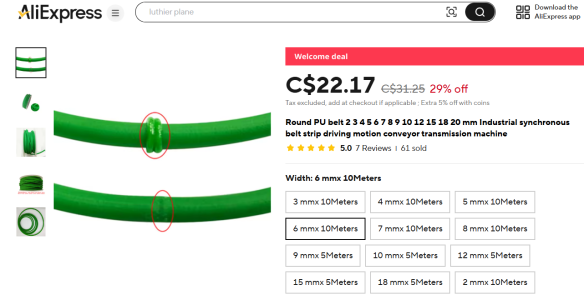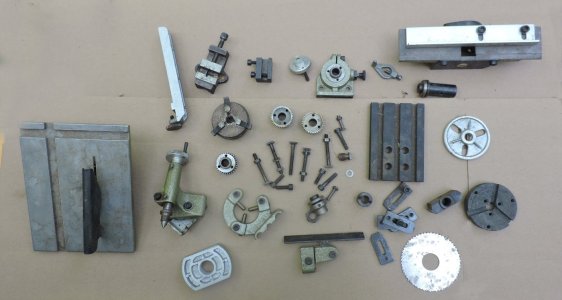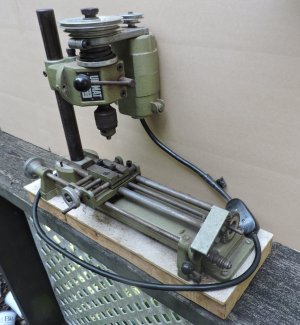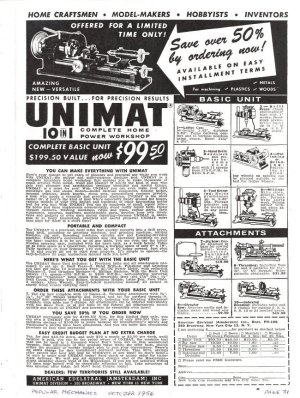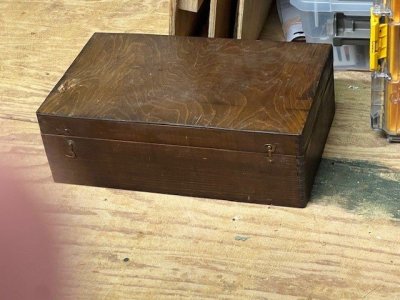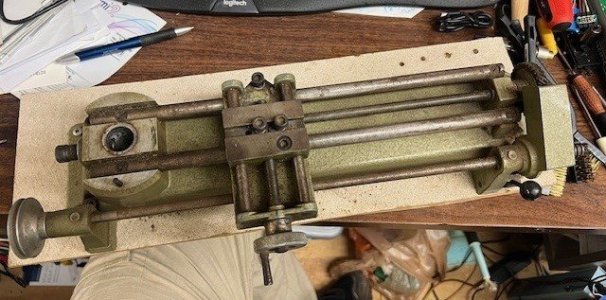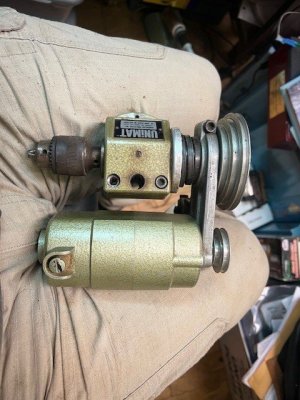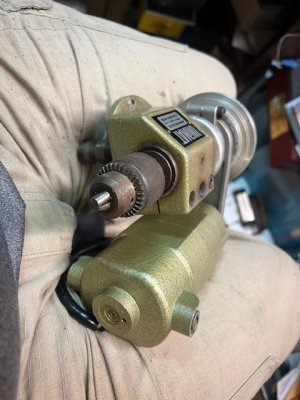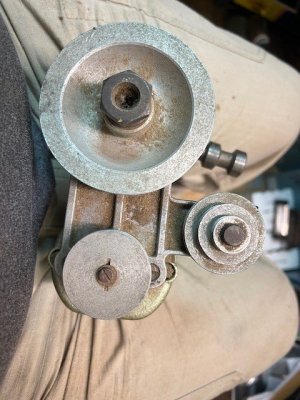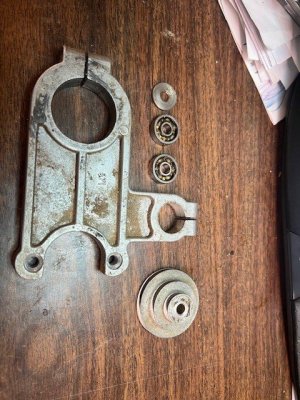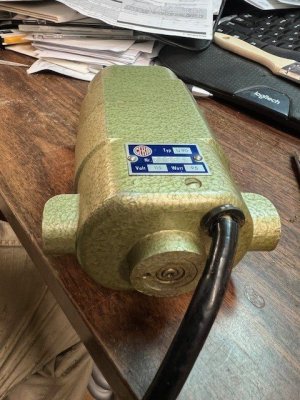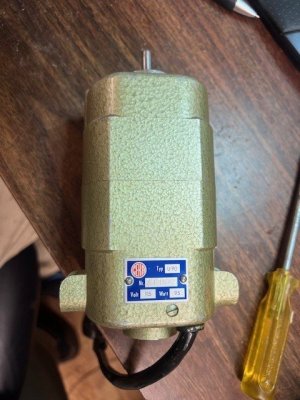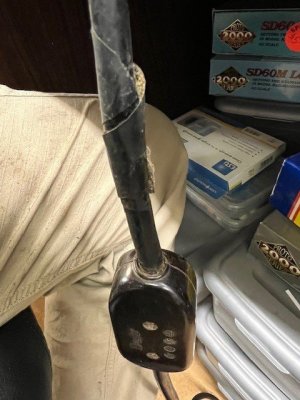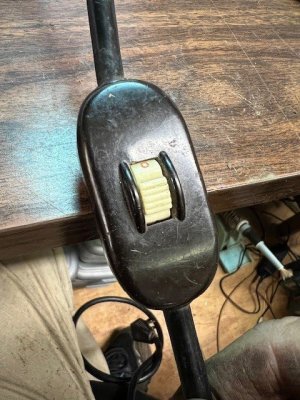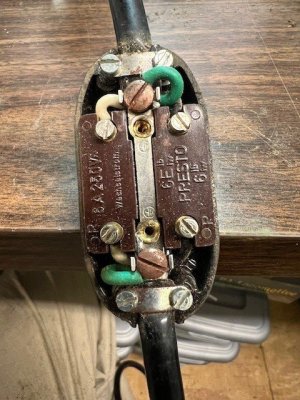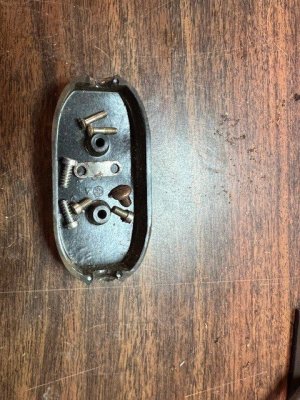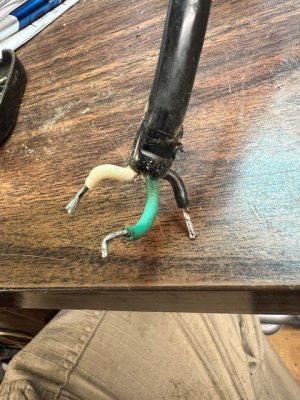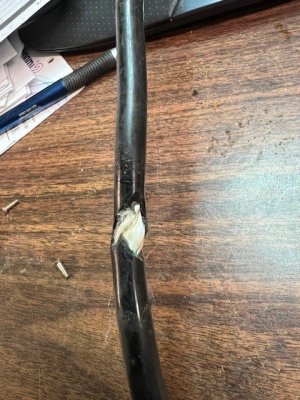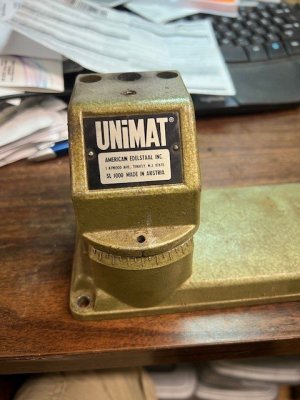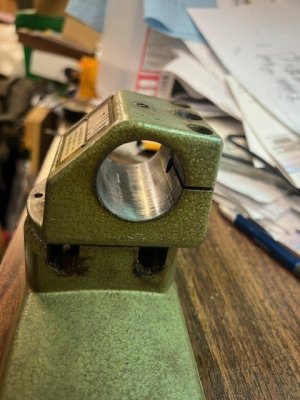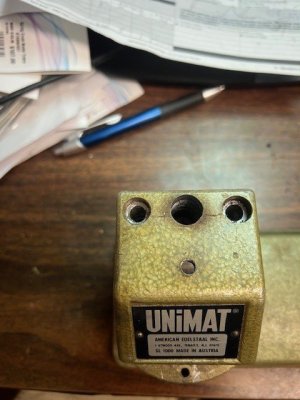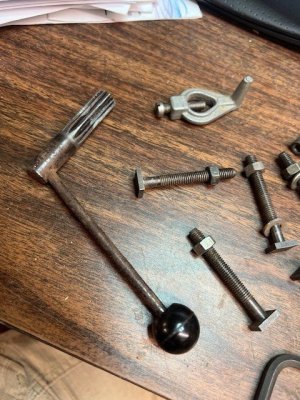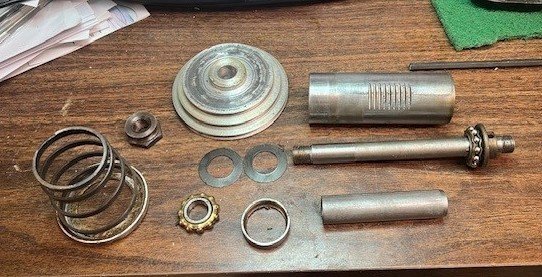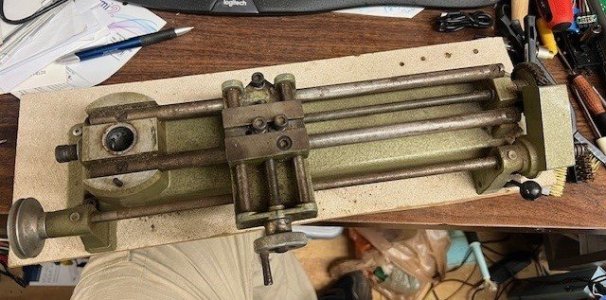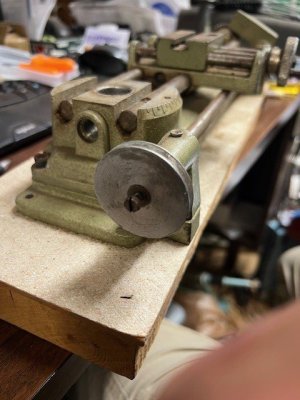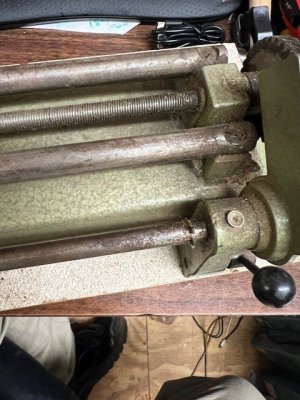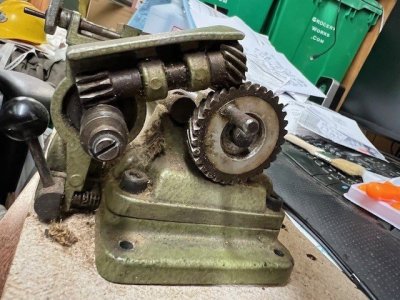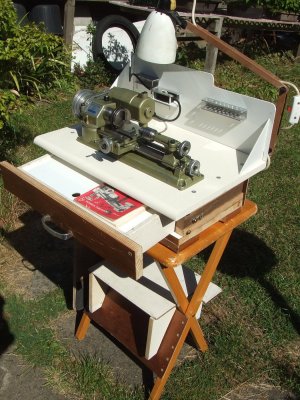Kurt Konrath
Kurt Konrath
Well I have been encouraged to post a "cleaning and restoring" log of the Unimat, that I recently bought from a fellow member of SoS.
Yesterday I received the unit from him thru my local shop that I have UPS things delivered to, and got a chance to give it a once over for what needed to be done to get it operational for use.
I had been told it had no belts, and I found a good online source to order a set of belts and other items that will be useful in operations.
After a trip to few local stores to get supplies needed, I am about ready to start on this project which should take only a few days to complete.
Yesterday I received the unit from him thru my local shop that I have UPS things delivered to, and got a chance to give it a once over for what needed to be done to get it operational for use.
I had been told it had no belts, and I found a good online source to order a set of belts and other items that will be useful in operations.
After a trip to few local stores to get supplies needed, I am about ready to start on this project which should take only a few days to complete.





